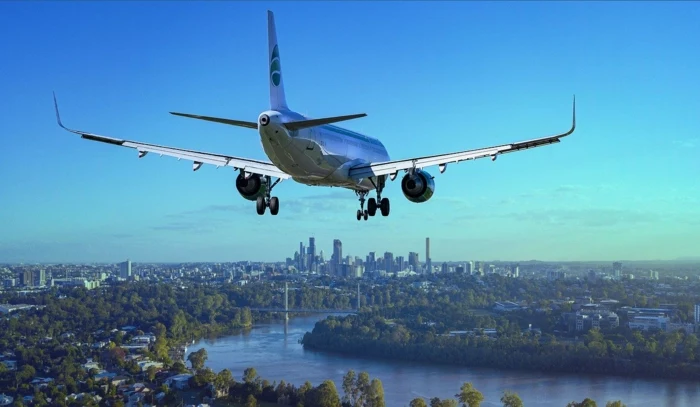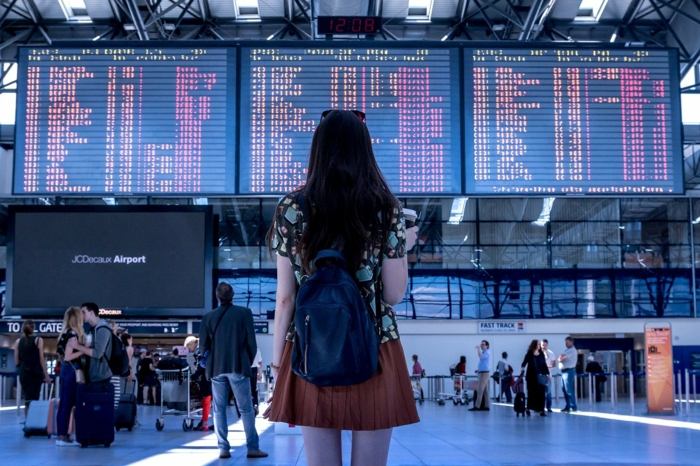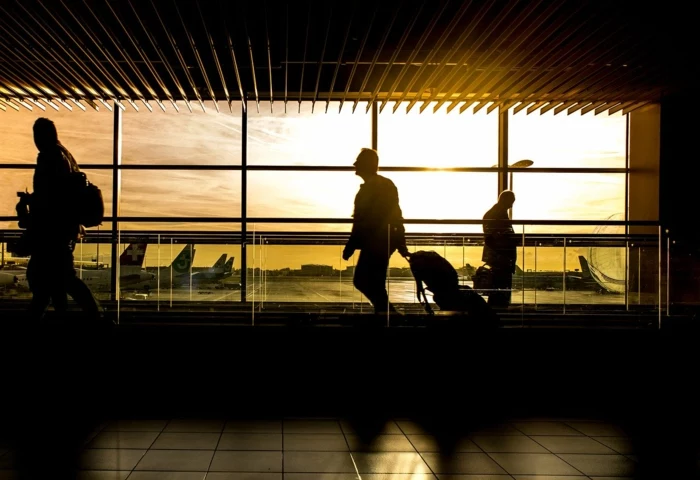My No-Nonsense Guide to Finding Fair Flights Without Losing Your Mind
I’ve spent a huge chunk of my life on planes. Not as a pilot, but as a regular person who just needed to get somewhere without taking out a second mortgage. I’ve booked last-minute emergency flights, work trips on the company dime, and meticulously planned vacations. And trust me, I’ve made some seriously dumb mistakes that cost me a lot of time and money.
In this article
But along the way, I figured out a system. It’s not about some magic website or a secret handshake. People always ask for that one trick, and honestly, it doesn’t exist.
The real secret? Understanding the game. You need to know how airlines think and how they price their seats. This isn’t about cheating the system; it’s about knowing the rules so you can play smarter. My goal here is to pull back the curtain and show you not just the ‘what’ to do, but the ‘why’ behind it. This is the knowledge that will help you find fair prices and travel with a lot less stress.

First, Why Are Flight Prices So Wildly Unpredictable?
Before you can spot a good deal, you have to know what you’re up against. Airline pricing is a beast, a complex system designed to squeeze the most money out of every single seat. Forgetting this is the first mistake most people make.
Basically, every major airline uses a super-powerful computer program to set prices. Think of it as the cold, calculating brain behind the scenes. This system chews through mountains of data—it knows historical booking patterns, when business travelers are flying (mid-week), and when vacationers are (weekends). It’s constantly watching how many seats are sold on a flight.
This is why prices are always changing. It’s called dynamic pricing. If a flight to Orlando a week before a major holiday is selling out faster than usual, that computer system automatically jacks up the price on the remaining seats. If a flight to Denver on a random Tuesday isn’t selling, it might drop the price to entice you. It’s not personal; it’s just a machine doing its job.

The ‘Fare Bucket’ Breakthrough
Here’s a concept that was a game-changer for me. Every economy cabin is secretly divided into invisible price categories called “fare buckets.” They all get you a standard economy seat—the seat itself is identical. The only thing that changes is the price and the rules attached.
Imagine a plane has 150 economy seats. The airline might put the first 10 seats in the cheapest bucket for, say, $199. Once those are gone, that bucket is closed forever. The next 15 seats are in the next bucket, now priced at $259. Once those sell out, the price jumps again. This continues until the very last few seats are left, which can sell for three or four times the original price. This is exactly why booking early usually saves you money—you’re getting a seat from a cheaper bucket.
It also explains that maddening experience when you see a price, hesitate for ten minutes to ask your partner, and come back to find the price has jumped by $60. You weren’t being personally targeted. It’s likely that in those ten minutes, someone else bought the last ticket in that cheap fare bucket, bumping you into the next, more expensive one.

The Million-Dollar Question: When Is the Best Time to Book?
Okay, so understanding the ‘why’ is great, but you really want to know when to pull the trigger. There’s no perfect answer, but after years of this, I have some solid rules of thumb that work for me.
Let’s be clear: last-minute deals are mostly a myth for air travel. The system is designed to charge desperate people more, not less.
- For domestic flights (within the US): The sweet spot is generally 1 to 3 months before your trip. I find the best value is often in the 4-6 week window. Any earlier and the prices can be surprisingly high; any later and you’re racing against those fare buckets filling up.
- For international trips: Start looking much earlier. I usually begin my searches 6-8 months out just to see what the baseline price is. I typically buy around the 3-5 month mark. This gives you time to watch the price trends without getting too close to the departure date.
- Holiday travel (think Christmas or Thanksgiving): This is a completely different animal. Book as early as you possibly can. Seriously. The cheap fare buckets for these flights can sell out the day they’re released, sometimes almost a year in advance. Don’t wait for a deal, because it’s probably not coming.

My Go-To Toolkit for Finding Flights
Forget hopping between a dozen different airline websites. That’s a surefire way to get confused and overwhelmed. To do this right, you need to use tools that scan the whole market at once.
Your Starting Point: Google Flights
More than 90% of my flight searches start and end with Google Flights. It’s incredibly fast, covers almost all airlines, and has features built for people who want to save money. And a key point: it’s a search engine, not a travel agency. It finds the deals and then sends you directly to the airline to book, which is usually the safest bet.
Here’s how I use it to its full potential:
- Never Search a Single Date: This is the biggest rookie mistake. After your first search, immediately click the date field to open the calendar view. It shows you prices for two whole months, so you can instantly see if leaving on a Tuesday instead of a Friday will save you $150.
- Use the ‘Explore’ Map: Got a travel itch but no firm destination? Use the Explore feature. Put in your home airport, select a month, and just pan around the map. It’s amazing. I once found a ridiculously cheap flight to Lisbon this way, a city I hadn’t even been considering.
- Set a Price Alert: If you know exactly where and when you want to go, set an alert. Google will email you if the price drops or spikes. It’s a great, low-effort way to monitor a flight you’re not quite ready to buy.
By the way, there’s a popular myth about using your browser’s “Incognito Mode” to find secret cheap fares. It’s… mostly false. What it does do is prevent websites from using cookies to create fake urgency. So while it won’t unlock a secret discount, it gives you a clean slate for every search, which is just good practice.

How to Spot a Genuinely Good Deal
So you’ve found a price—but is it a deal or a ripoff? Is $450 to fly to Los Angeles good? The answer depends on when you’re going and where you’re coming from.
A lesser-known trick on Google Flights is the little price graph. On many popular routes, it will show you the historical price range, telling you if the current fare is high, typical, or low. This is gold. It gives you the context you need to decide whether to book now or wait. After a while, you just get a feel for your home routes.
Your mission, should you choose to accept it: Go to Google Flights right now. Put in your home airport and a dream destination for about 3 months from now. Don’t pick specific dates—just click the date box and look at the entire month view. Find the cheapest week to go. This two-minute exercise will show you exactly what I’m talking about.
Watch Out for These Common Traps
Finding a good price is only half the battle. You also have to avoid the traps that can turn a cheap flight into an expensive nightmare.
The ‘Basic Economy’ Trap
Heads up! That rock-bottom price you see is often for a “Basic Economy” ticket. This is the #1 mistake I see beginners make. Booking this fare usually means you get NO checked bag, NO carry-on bag (only a small personal item), NO seat selection (you get the dreaded middle seat), and absolutely NO changes or refunds allowed. That $50 you thought you saved can easily be eaten up by a surprise $65 gate-check fee for your roller bag. Always, ALWAYS click to read the fare details before you buy.
A Quick Word on Budget Airlines
So, what about those super-cheap airlines? You know the ones. Their fares can look too good to be true, and sometimes they are. These airlines operate on an “unbundled” model. The base fare pays for one thing: getting your body from Point A to Point B. Everything else costs extra. Want to pick a seat? That’s a fee. Want a carry-on bag? Fee. A checked bag? Bigger fee. A bottle of water on board? Fee.
If you can travel with nothing but a backpack and don’t care where you sit, they can be an amazing deal. But if you need a bag and a decent seat, add up all the fees. Sometimes, the final cost is more than a standard airline ticket.
The Danger of Unknown Booking Sites
Search engines will often show you prices from dozens of online travel agencies (OTAs), many with names you’ve never heard of. While booking direct with the airline is often best, using a major, reputable OTA like Expedia is usually fine. But those small, unknown sites? Be very, very careful.
You might save $25, but you’re introducing a risky middleman. If anything goes wrong—a schedule change, a cancellation—the airline will tell you to call the travel agency. And trying to get help from their customer service can be a complete nightmare.
I learned this the hard way. I booked through a sketchy-looking site to save about $40 on a flight to Bangkok. The airline changed the departure time, making my connection impossible. The airline’s hands were tied; they told me my ticket was owned by the agency and only they could change it. I then spent three days in a cycle of 45-minute hold times and dropped calls with a call center halfway around the world. I eventually had to give up and buy a whole new connecting flight myself. That $40 I ‘saved’ ended up costing me over $300 and a ton of stress. Never again.
Inspirational Gallery
The Incognito Mode Myth: While clearing your cookies can’t hurt, it’s not the silver bullet many claim it to be. Airlines set prices based on real-time demand and seat availability across their entire network, not on how many times you’ve searched for a flight to Paris. The price went up because seats were sold, not because the airline is watching you personally.
A 2023 analysis by Google Flights revealed that for US domestic flights, prices are typically at their lowest 44 days before departure. The old ‘book on a Tuesday’ rule has far less impact than your booking window.
This data confirms what savvy travelers know: timing is more crucial than the day of the week. Airlines start pricing flights high, lower them to fill seats, and then hike them again for last-minute bookers. Aiming for that 1-2 month sweet spot is a strategy based on how the industry actually operates.
Are all flight search engines the same?
Not at all. Think of them as different tools for different jobs. Google Flights is unbeatable for exploration; its calendar and map views let you see prices over entire months or regions to find the cheapest destination. Skyscanner often includes more international budget carriers that others miss. Meanwhile, Momondo excels at pulling in deals from smaller online travel agencies (OTAs) that might offer a slightly lower price, though sometimes with stricter conditions.
Don’t let a low base fare fool you, especially on budget airlines. Before you click ‘buy’, mentally add the real costs:
- Carry-on bags: Airlines like Spirit and Frontier charge for anything larger than a small backpack.
- Seat selection: Want to sit with your family? That’s an extra fee, often per person, per flight segment.
- Checked luggage: The price can sometimes be almost as much as the flight itself.
- Printing a boarding pass: Some, like Ryanair, notoriously charge a fee if you don’t check-in online and print your own pass.
Direct with the Airline: Booking on sites like delta.com or united.com often makes changes, cancellations, and customer service far easier to handle. You’re their direct customer.
Online Travel Agency (OTA): Using Expedia or Kayak can sometimes unearth a slightly cheaper fare by bundling flights, but if an issue arises, you have to deal with their customer service, who then has to deal with the airline’s—a frustrating game of telephone.
For peace of mind, especially on complex trips, booking direct is often worth a few extra dollars.
- Dramatically lower flight and accommodation prices.
- Far fewer crowds at iconic landmarks.
- A more authentic feel as you mingle more with locals than tourists.
The secret? Travel during the “shoulder seasons.” These are the magical periods just outside the peak summer rush, like May-June and September-October for Europe. You get great weather without the peak season madness and price gouging.
Let the deals come to you. Instead of searching obsessively, set up alerts. Google Flights offers a robust tracking feature for specific routes and dates. For a more proactive approach, subscription services like Going (formerly Scott’s Cheap Flights) or Thrifty Traveler Premium employ teams that hunt for deals and error fares departing from your home airports, sending the bargains directly to your inbox.
The ‘Fifth Freedom Flight’ is one of the coolest travel hacks. It’s when an airline from country A flies between country B and country C. For example, Singapore Airlines flies from New York (JFK) to Frankfurt (FRA).
These flights are often operated on larger, more comfortable long-haul aircraft, and because the airline is trying to fill seats on a single leg of a much longer journey, you can sometimes find great prices and superior service compared to local carriers on the same route.










